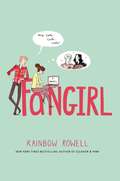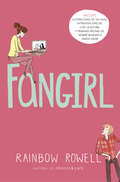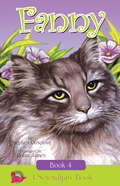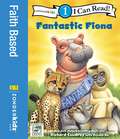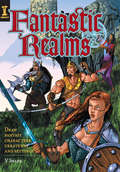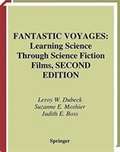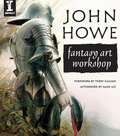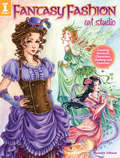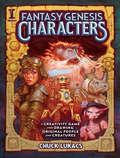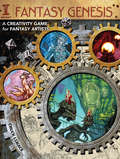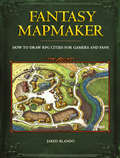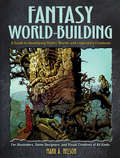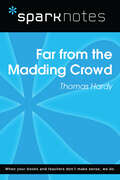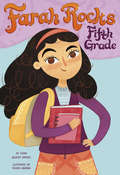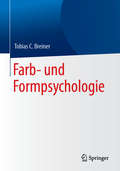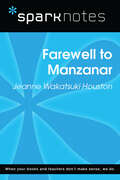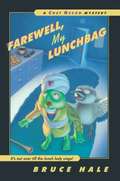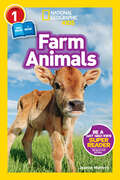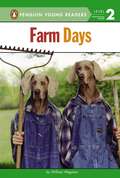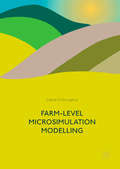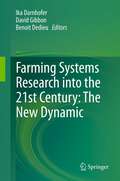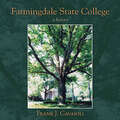- Table View
- List View
Fangirl
by Rainbow RowellIn Rainbow Rowell's Fangirl, Cath is a Simon Snow fan. Okay, the whole world is a Simon Snow fan, but for Cath, being a fan is her life--and she's really good at it. She and her twin sister, Wren, ensconced themselves in the Simon Snow series when they were just kids; it's what got them through their mother leaving. Reading. Rereading. Hanging out in Simon Snow forums, writing Simon Snow fan fiction, dressing up like the characters for every movie premiere. Cath's sister has mostly grown away from fandom, but Cath can't let go. She doesn't want to. Now that they're going to college, Wren has told Cath she doesn't want to be roommates. Cath is on her own, completely outside of her comfort zone. She's got a surly roommate with a charming, always-around boyfriend, a fiction-writing professor who thinks fan fiction is the end of the civilized world, a handsome classmate who only wants to talk about words . . . And she can't stop worrying about her dad, who's loving and fragile and has never really been alone. For Cath, the question is: Can she do this? Can she make it without Wren holding her hand? Is she ready to start living her own life? Writing her own stories? And does she even want to move on if it means leaving Simon Snow behind?
Fangirl
by Rainbow RowellIn Rainbow Rowell's Fangirl, Cath is a Simon Snow fan. Okay, the whole world is a Simon Snow fan, but for Cath, being a fan is her life-and she's really good at it. She and her twin sister, Wren, ensconced themselves in the Simon Snow series when they were just kids; it's what got them through their mother leaving. Reading. Rereading. Hanging out in Simon Snow forums, writing Simon Snow fan fiction, dressing up like the characters for every movie premiere. Cath's sister has mostly grown away from fandom, but Cath can't let go. She doesn't want to. Now that they're going to college, Wren has told Cath she doesn't want to be roommates. Cath is on her own, completely outside of her comfort zone. She's got a surly roommate with a charming, always-around boyfriend, a fiction-writing professor who thinks fan fiction is the end of the civilized world, a handsome classmate who only wants to talk about words . . . <P>And she can't stop worrying about her dad, who's loving and fragile and has never really been alone. For Cath, the question is: Can she do this? Can she make it without Wren holding her hand? Is she ready to start living her own life? And does she even want to move on if it means leaving Simon Snow behind? <br><b> A New York Times Best Seller!</b>
Fangirl
by Rainbow RowellLa deliciosa y emotiva historia de una nerd destinada a la grandeza... Cath y Wren son gemelas idénticas, y hasta hace poco lo hacían absolutamente todo juntas. Ahora están a la universidad. Wren le ha dejado claro que no piensa compartir habitación con ella. Para Wren es una oportunidad única de empezar de cero y conocer gente. Para Cath no es tan fácil. Es terriblemente tímida. Su único mundo es ser fan de Simon Snow, donde ella se siente a gusto, donde siempre sabe exactamente qué decir y donde puede escribir un romance mucho más intenso que cualquier cosa que haya experimentado en la vida real. Sin Wren, Cath se siente completamente sola, fuera de su zona de confort. Tiene una compañera de cuarto antipática, siempre acompañada de su atractivo novio, un profesor de escritura que piensa que el fan fiction es el fin del mundo civilizado, un guapo compañero de clase, que sólo quiere hablar de palabras...Y además no puede dejar de preocuparse por su padre, que es amoroso y frágil y nunca ha estado realmente solo. Ahora Cath tiene que decidir si está dispuesta a abrir su corazón a los nuevos amigos y a las nuevas experiencias, y se está dando cuenta de que hay mucho más que aprender sobre el amor de lo que nunca creyó posible. Reseñas: «Conmovedora. Absolutamente real.»Publisher's Weekly «Absolutamente cautivadora.»Kirkus Reviews «Los diálogos realmente auténticos, una notable empatía con los adolescentes, un retrato honesto de los jóvenes y el primer amor ofrecen una lectura fascinante.»Lancashire Evening Post «Una novela divertida, triste, inteligente y entretenida.»Armadillo Magazine «Una delicia para los adolescentes en la búsqueda del primer amor... lo suficientemente inteligente como para mantenerles leyendo.»The Daily Telegraph
Fanny
by Stephen Cosgrove Robin JamesFanny, the cat, has only three legs on which she manages just fine. She is normal as normal can be. Sadly, the other animals on the Serendipity Farm won't befriend her because they are afraid she will feel uncomfortable since after all she has but three legs. A little dog named Ruby learns that handicap is just a state of mind. Ages 5-9.
Fanny Crosby's Life-Story By Herself
by Fanny CrosbyFanny Crosby’s Life-Story by Herself is an inspiring autobiography of one of the most prolific hymn writers in history. Blind from infancy, Fanny Crosby overcame significant challenges to become a celebrated poet, lyricist, and advocate for the visually impaired. In her own words, Crosby reflects on her remarkable life, filled with unwavering faith, resilience, and an extraordinary gift for composing hymns that continue to inspire generations.The narrative begins with Crosby’s childhood in rural New York, where she describes the early loss of her sight and the influence of her grandmother, who nurtured her education and faith. Rather than focusing on limitations, Crosby embraces her condition as a divine calling, crediting her blindness with sharpening her spiritual vision. Her journey takes readers through her time at the New York Institution for the Blind, where she developed her love for music, writing, and teaching.Crosby shares heartfelt stories of the people, places, and experiences that shaped her—particularly her encounters with influential figures, including U.S. presidents and prominent religious leaders. Central to the autobiography is her deep Christian faith, which not only inspired her personal life but also fueled the creation of over 8,000 hymns, including beloved classics like “Blessed Assurance” and “To God Be the Glory.”Beyond her musical achievements, Crosby’s work as a public speaker and social reformer shines through, revealing her commitment to serving others, especially the poor and disabled. Her humility, humor, and sense of purpose resonate throughout the book, offering readers a glimpse into the heart of a woman whose words touched countless lives.Fanny Crosby’s Life-Story by Herself is not only a testament to personal triumph but also an invitation to trust in the power of faith and perseverance. For readers drawn to memoirs, hymnody, or stories of spiritual inspiration, this autobiography remains a deeply moving and timeless account of a life well lived in service to God and humanity.
Fantastic Fiona: Level 1 (I Can Read! / A Fiona the Hippo Book)
by ZondervanJoin your favorite hippo, Fiona, the adorable internet sensation from the Cincinnati Zoo and Botanical Garden, as she visits her zoo friends, finding out what makes each one special. Is it their speedy running? Their lovely singing? And what makes Fiona so special to all of her friends?Young readers will enjoy learning more about Fiona and her friends in this Level One I Can Read about the little hippo that has captured hearts around the world with her inspiring story and plucky personality.Fantastic Fiona is:An endearing animal book that&’s a perfect gift from parents and grandparentsAn inspiring story about what makes each of us unique and specialA Level One I Can Read story geared for children just learning to readCreated by New York Times bestselling artist Richard Cowdrey of Fiona the Hippo; A Very Fiona Christmas; Fiona, It&’s Bedtime; Legend of the Candy Cane; Bad Dog, Marley; and A Very Marley Christmas fame
Fantastic Realms!: Draw Fantasy Characters, Creatures and Settings
by V. Shane ColcloughCreate Your Own Fantastic Realms!An arduous journey leads you to a hilltop. Before you stretches a land of castles filled with noble knights, elven warriors and fearsome goblins and gargoyles. At your feet lies a book...Within its pages you will discover the secrets to sketching, drawing and coloring wondrous worlds - realms filled with creatures friendly and foul, beautiful princesses and stealthy magic-users, ancient ruins and dragons' lairs.Begin your journey by following the steps within, which will guide you from simple sketches to fully colored works of art. Take heart, brave traveler, for you'll be aided in your quest by:Texture and coloring keys that show you exactly how to create dozens of different effectsA brainstorming game that, with a roll of the dice, allows you to mix and match character, creature and scene characteristicsBut beware, friend: Along the way, you will be powerless to resist the temptation to explore the strange and twisted detours of your own utterly original imaginings. Wield your pencil bravely - so begins your adventure...30+ step-by-step demonstrations make it easy to create your own fantastic worlds!The Characters: Human or elf, fighter or princess ... learn to outfit your characters with specialized clothing, weaponry and magical items, and tell their tales with dynamic gesture and motion.The Creatures: Evoke dragons, demons, griffins and other edgy beasts of your own twisted imaginings, with special attention to key details that make them look regal or demented.The Settings: Construct convincing environments that set the tone and atmosphere of your story, be it a mysterious tower, ancient ruins or a peaceful village.
Fantastic Voyages: Learning Science Through Science Fiction Films
by Leroy W. Dubeck Suzanne E. Moshier Judith E. BossBy revealing the facts behind the fiction of some of the finest films in the sci-fi genre, "Fantastic Voyages" offers a novel approach to teaching science: using scenes from science fiction films to illustrate fundamental concepts of physics, astronomy, and biology.
Fantasy Art Workshop
by John HoweHere's how I do it, and why?: this is the premise behind John Howe's very first practical exploration of his artistic inspirations, approaches and techniques. Perfect for practical artists and fans of John Howe's work, this book provides step-by- step demonstrations, sketches and outstanding finished paintings, some of which were designed specifically for this book. The book covers a wide range of subjects essential to any aspiring fantasy artist, including materials and the creative process, as well as drawing and painting humans, beasts, landscapes and architecture. Readers will also find further inspiration and guidance on presenting work in various forms including film work, book covers and advertising.
Fantasy Fashion Art Studio: Creating Romantic Characters, Clothing and Costumes
by Meredith DillmanLive out all your fashion fantasies! Flower fairies, water spirits, enchanted forests, Victorian ladies and more! Immerse yourself in timeless stories inspired by nature, myths, legends and literature! With Fantasy Fashion Art Studio, you'll learn the basics for sketching and watercolor painting; you'll also learn to draw and paint beautiful, ethereal characters! Inside you'll explore: Lessons and tips for sketching characters--proportions, heads, hands, feet, hair, wings and more. Drawing and painting tips for fashions from the medieval, Renaissance and Victorian periods as well as traditional Japanese, Steampunk, folk and gothic influences. 10 fully stepped-out demonstrations for drawing and painting a multitude of dreamy characters, including mermaids, enchanted princesses, fairies and more. 18 mini step-by-step demonstrations to help you create dreamscape scenes, including the night skies, forests, architecture, flowers and leaves. A fashionable trip through a fantasy landscape, Fantasy Fashion Art Studio will help you bring all of your fantasies to life!
Fantasy Genesis Characters: A creativity game for drawing original people and creatures
by Chuck LukacsConjure creatures and characters from your imagination! To generate fantasy characters and inhabitants that populate an imaginary world, sometimes you need a little creative fuel...and a 20-sided die.Fantasy Genesis Characters is a choose-your-own-adventure game where a roll of the dice decides what type of creature you create. Each chapter expands on mimicking the observable world to engineer original populations by mashing up unrelated quirks and concepts--think "vegetarian zombie," "Byzantine goth" or "gangster sheep." Roll the dice to combine traits from word lists. Mix random emotions, behaviors, costumes, cultures and anthropomorphic attributes to create infinite and unexpected characters. Short lessons supply the building blocks to develop character components--expressions, gestures, posture, etc.--while mini demos, creative challenges and RPG-like activities help you bring them to life.30+ challenges and demonstrations illustrate how to conceptualize and create fully developed fantasy charactersUse free-association word games to jump-start your brain into forming original ideas, crazy-cool mash-ups and visual solutionsIncludes a crash course in anatomy, plus tips for drawing from life and reference photosLearn to sketch facial expressions and modify classic archetypes
Fantasy Genesis: A Creativity Game for Fantasy Artists
by Chuck LukacsGet Rolling on Your Most Inventive Artwork Ever! What lurks in the shadows of your imagination? This book takes you deep into the dusty corners and dark recesses where your most original ideas lie in wait, showing you how to lure them out into daylight, and shape them into fantastic yet believable concept art. Experimentation is the cornerstone of Fantasy Genesis. A series of dice rolls and corresponding word lists present you with an infinite variety of jumping-off points and visual problems to solve. The challenge (and the fun) is to meld seemingly unrelated and everyday elements such as a caterpillar, seashells, fire or a hammer into exceptionally curious, grotesque, oddly beautiful and totally unexpected creations. 40+ step-by-step mini-demonstrations illustrate basic techniques for drawing a wide range of fantasy elements and forms 3 game variations (complete with game sheets) lead you to create fiercely imaginative objects, creatures and humanoids 3 full-length demonstrations show how to play the game from your first rolls of the die to finished concept drawings Use this art-game as a warm-up, a bulldozer for creative-block or a daily sketching exercise to generate a stockpile of inspired beasties, heroes, costumes, weapons and other never-before-dreamt creations. It all starts with a roll, a word and your imagination.
Fantasy Mapmaker: How To Draw Rpg Cities For Gamers And Fans
by Jared BlandoCreate authentic-looking maps of fantasy cities, hamlets, fortifications and more in a popular tabletop, RPG style. • 30+ step-by-step demonstrations show you how to create your own unique RPG maps • Learn how to draw fantasy cities, medieval settlements and more from a professional gaming illustrator • Tips and techniques for drawing fences, stone walls, forests, fields, bridges, footpaths, mountains, harbors, shields, coats of arms and other cartography elementsPut your design and drawing skills on the map!
Fantasy World-Building: A Guide to Developing Mythic Worlds and Legendary Creatures (Dover Art Instruction)
by Mark NelsonWhen artists and designers explore or create a fictional setting, the milieu must be completely fleshed out, explained, and designed. In this book, comic and gaming art veteran Mark A. Nelson explores and demonstrates his methods for fashioning visually stunning, believable environments for fantasy creatures and characters. Scores of images and step-by-step examples illustrate how variation and experimentation lead to fresh, original designs for otherworldly beings, their environments, and their stories.Nelson discusses how to find ideas and borrow from history to add the strength of realism to a fantasy world. In describing the best ways to establish a habitat, he offers specifics about climate, terrain, flora, and wildlife. He shares insights into founding societies in terms of their means of survival, manner of warfare, spiritual practices, style of dress, and levels of technology. All visual creatives who work with imaginative material — illustrators, comic artists, and writers — will take a lively interest in this source of inspiration and practical knowledge.
Far From The Madding Crowd: UBC contracted
by Thomas HardyThis story of an entrepreneurial young woman trying to make her way in a man's world is as pertinent today as it was when first published in 1874. The novel is set in rural England, where Bathsheba tries to succeed as a farmer, facing difficulties of weather or the sickness of her sheep. Equally difficult, though, are the choices she needs to make concerning the men who are interested in her, and the types of love they offer. This classic novel has lessons that are pertinent in South Africa today, where gender roles and difficult choices constantly affect lives. Far from the Madding Crowd contains a number of additional features, including: • An introduction that defines the key aspects of a novel and provides a more detailed understanding of certain features of this story: – The plot – The characters – A biography of the author – The context of the novel – The novel's relevance in South Africa today • Contextual questions and answers that help to create a deeper understanding of the novel and encourage learners to develop their own critical insights into the story; this section also stimulates discussion in the classroom so that learners can engage with each other • A glossary defining and explaining terms and phrases found throughout the novel, to aid learner's understanding of the text.
Far from the Madding Crowd (SparkNotes Literature Guide Series)
by SparkNotesFar from the Madding Crowd (SparkNotes Literature Guide) by Thomas Hardy Making the reading experience fun! Created by Harvard students for students everywhere, SparkNotes is a new breed of study guide: smarter, better, faster.Geared to what today's students need to know, SparkNotes provides:chapter-by-chapter analysis explanations of key themes, motifs, and symbols a review quiz and essay topics Lively and accessible, these guides are perfect for late-night studying and writing papers.
Farah Rocks Fifth Grade (Farah Rocks)
by Susan Muaddi DarrajFarah and her best friend, Allie Liu, are getting excited to turn in their applications to the Magnet Academy, where they both hope to attend sixth grade. But when new girl Dana Denver shows up, Farah's world is turned upside down. As Dana starts bullying Farah's little brother, Samir, Farah begins to second-guess her choice to leave him behind at Harbortown Elementary/Middle School. Determined to handle it on her own, Farah comes up with a plan--a plan that involves lying to those closest to her. Will her lies catch up with her, or can Farah find a way to defeat the bully and rock fifth grade?
Farb- und Formpsychologie
by Tobias C. BreinerDieses Werk ist eine umfassende und praxisrelevante Darstellung zur Farb- und Formpsychologie. Mit einer klaren Sprache und über 100 farbigen Abbildungen wird Ihnen die komplexe Thematik auf eine wissenschaftliche und anregende Art veranschaulicht.Über eine allgemeine Einführung in die Grundlagen des visuellen Systems hinaus werden Sie ebenfalls spezielles Wissen zu Assoziationen, Wirkungen und Anwendungen bestimmter Farben und Formen erwerben. Speziellen Wert legt der Autor dabei auf deren Einsatz im Game Design. Es wird zudem erstmals eine neue Farbstudie präsentiert, die zeigt, dass die Assoziationen zu Farben sich in einem in sich logischen dreidimensionalen System anordnen lassen. Die daraus gezogenen überraschenden Erkenntnisse liefern mögliche Antworten auf fundamentale Fragen der Philosophie. Das Buch ist daher nicht nur ein Muss für Wahrnehmungspsychologen und Designer, sondern eine Bereicherung für alle an dieser Thematik Interessierten.
Farewell to Manzanar (SparkNotes Literature Guide Series)
by SparkNotesFarewell to Manzanar (SparkNotes Literature Guide) by Jeanne Wakatsuki Houston Making the reading experience fun! Created by Harvard students for students everywhere, SparkNotes is a new breed of study guide: smarter, better, faster.Geared to what today's students need to know, SparkNotes provides:chapter-by-chapter analysis explanations of key themes, motifs, and symbols a review quiz and essay topics Lively and accessible, these guides are perfect for late-night studying and writing papers.
Farewell, My Lunchbag
by Bruce HaleDanger may be Chet Gecko's business, but dessert is his delight. . . . Chet Gecko's hunger for mystery is matched only by his appetite for cockroach casserole, mosquito marshmallow surprise, and stinkbug pie. So when the cafeteria needs help nabbing a food thief, Chet digs into the case with a passion he usually reserves only for dessert. But this time Chet may have bitten off more than even he can chew. Someone has framed him, and now everyone at Emerson Hicky--even his trusted partner, Natalie Attired--thinks the food thief is none other than Chet!
Farm Animals (Readers)
by Joanne MatternAdult and child readers will learn all about adorable farm animals together in this new Co-reader from National Geographic Kids.
Farm Days (Penguin Young Readers, Level 2)
by William WegmanFamed photographer William Wegman and his iconic Weimaraners are headed to the farm!City boy Chip has been invited by his cousins to visit them on the Old McKay Farm. Chip learns how to plant a garden, mow the grass, and milk a cow. But it is hard work! Chip is ready to head back to the city at the end of the day.
Farm-Level Microsimulation Modelling
by Cathal O'DonoghueThis book, which is the first to be published in the emerging field of farm-level microsimulation, highlights the different methodological components of microsimulation modelling: hypothetical, static, dynamic, behavioural, spatial and macro–micro. The author applies various microsimulation-based methodological tools to farms in a consistent manner and, supported by a set of Stata codes, undertakes analysis of a wide range of farming systems from OECD countries. To these case studies, O’Donoghue incorporates farming policies such as CAP income support payments, agri-environmental schemes, forestry planting incentives and biomass incentives – in doing so, he illuminates the merits of microsimulation in this environment.
Farming Systems Research into the 21st Century: The New Dynamic
by Ika Darnhofer Benoît Dedieu David GibbonFarming Systems Research has three core characteristics: it builds on systems thinking, it depends on the close collaboration between social and biophysical sciences, and it relies on participation to build co-learning processes. Farming Systems Research posits that to contribute towards sustainable rural development, both interdisciplinary collaborations and local actor engagement are needed. Together, they allow for changes in understanding and changes in practices. This book gives an overview of the insights generated in 20 years of Farming Systems Research. It retraces the emergence and development of Farming Systems Research in Europe, summarises the state-of-the-art for key areas, and provides an outlook on new explorations, especially those tackling the dynamic nature of farming systems and their interaction with the natural environment and the context of action.
Farmingdale State College: A History (Excelsior Editions)
by Frank J. CavaioliLocated on 380 acres on the Nassau-Suffolk border, Farmingdale State College (FSC) is the oldest public college on Long Island. In this fascinating and lavishly illustrated history, Frank J. Cavaioli chronicles the school's rich history from the time it was chartered in 1912 up to the present. He investigates the leadership of such important directors and presidents as Albert A. Johnson, Halsey B. Knapp, Charles W. Laffin Jr., and Frank A. Cipriani, and demonstrates how they motivated faculty to create progressive, innovative programs, and urged them to give service to the community. The school's original mission was to provide training in agricultural science, but over time it has transformed into a comprehensive college focused on applied science and technology with a strong humanities and social science component. Now a campus of the State University of New York with nearly seven thousand students, the story of FSC is unique, one that mirrors the transformation and growth of the surrounding Long Island community.
